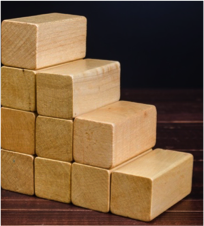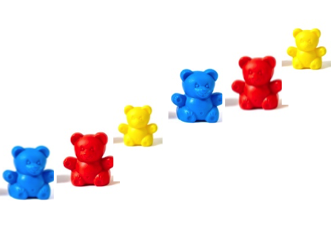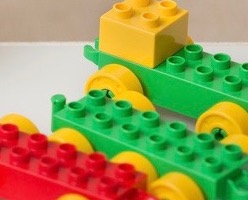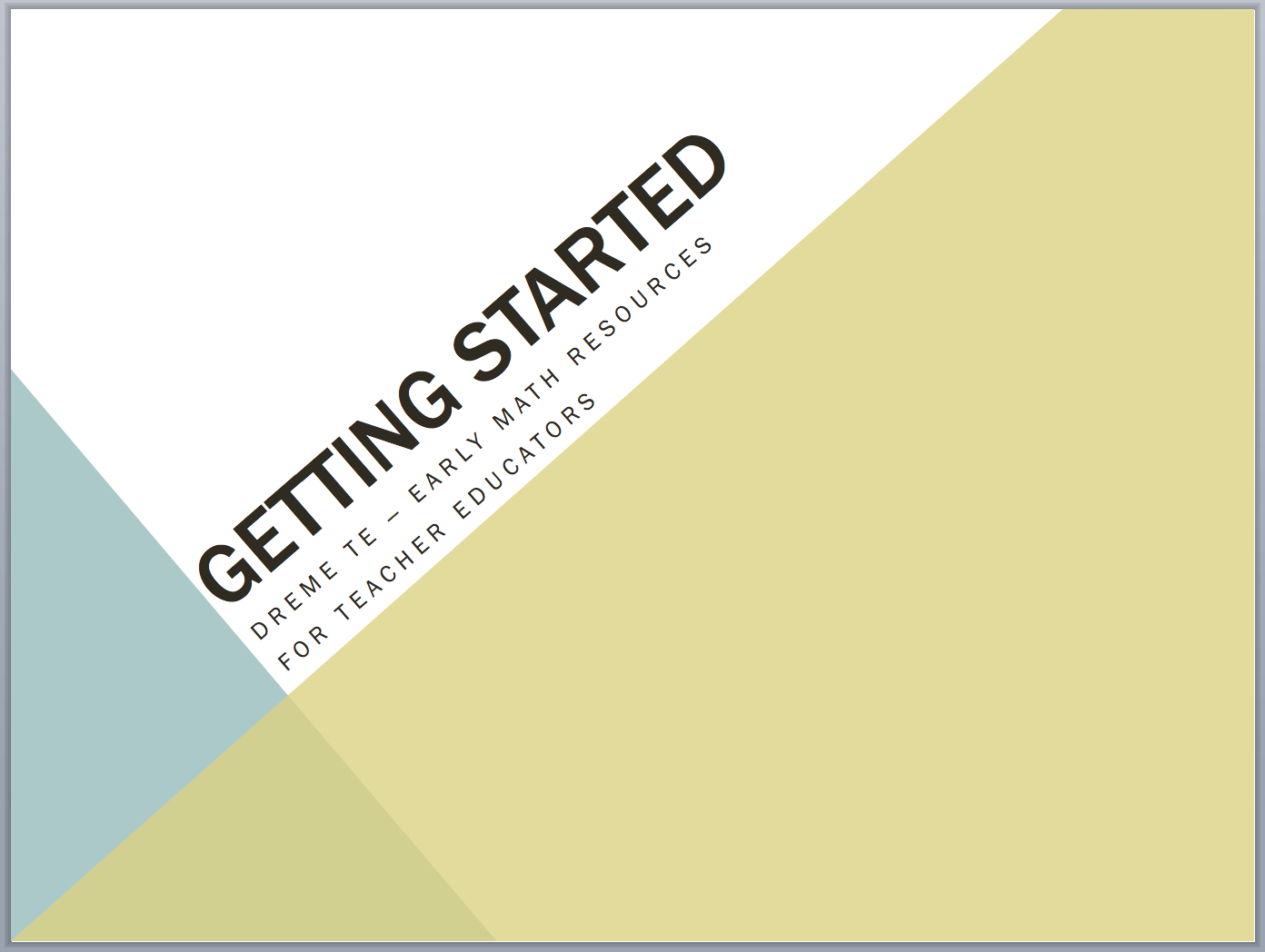This is the story of how Teachers Steph and Maria found out what children notice about patterns and why that matters.

As they observed the children playing, Teachers Steph and Maria noticed that they engaged in pattern activities throughout the day, whether it was alternating colors in a drawing of a striped dragon or building stairs on their block houses. But the children rarely talked about these patterns, and Steph and Maria weren’t even sure that the children knew they were patterns. Obviously, a change in approach was needed. Observation just wasn’t enough to figure out what the children understood.
Maria had a revelation on her way to work the next day: what if we asked the children what they noticed about the patterns? She shared her thoughts with Steph. “We know children need to be able to group or classify objects—at least informally—in order to create patterns. I mean, if they are patterning by color, they need to be able to group items by color. Right? So, what if we ask them what they notice about their patterns? Then they can talk about how the objects are different and the same and how they are putting them together. What do you think, Steph?” Steph wasn’t sure exactly what Maria meant, but it sort of made sense. “Okay, let’s try that. But maybe you can show me what you mean?”
That morning Maria and Steph walked around the classroom looking for opportunities to engage children in questions about their patterns. Ameen and Flora were playing with the cars and trucks and had created a line of vehicles. The colors of the vehicles alternated between blue and red. Maria pointed out the line to Steph. “Look, Steph!” she whispered and then asked the children, “Wow, you’ve got a long line of vehicles there. What do you notice about those vehicles?” Flora looked up. “Ummmm...” she looked back down. “Ummm, they have wheels?” Maria looked a bit startled. She had expected Flora to say something about the colors. Now what? Steph picked up the conversation. “Hmm, what do you notice about the wheels?” Without even glancing at the vehicles, Flora answered, “There are lots of wheels.” Steph followed up, “So, every time you have one vehicle, you have how many wheels?” Flora looked down at the line of vehicles. “Uh, four wheels?” She put her head on the floor so she could see the wheels on the line of vehicles better. “I have a lot of fours!” she said, and smiled.
As Maria and Steph walked away, Steph said, “That was a pattern! She knew it was a pattern! I wanted her to talk about the blue–red–blue–red pattern but she noticed a different one! Let’s do some more!”
 They approached Cala playing with the plastic bear manipulatives. Wow, she had a pattern going, too. She had the bears in a line alternating between three colors: blue, red, and yellow. Steph asked, “Can you tell me about your bears?” Cala looked up. “I have a lot of families!” Hoping to draw Cala’s attention to the color pattern that she had created, Steph persisted, “You have different colored bears, don’t you?” Cala replied emphatically, “I have families.” This time Maria stepped in. “What can you tell us about your bear families?” Cala said, “Look! A daddy, a mommy, and a baby.” She pointed at each as she labeled them. Sure enough, there were three different bears: a large blue bear, a large red bear and a small yellow bear. And, they were repeated down the line. That was the most important part, not that she had blue then red then yellow bears, but that they were families. Geez, it was a pretty complicated pattern, too. Cala had to keep track of the size and color of the bears at the same time.
They approached Cala playing with the plastic bear manipulatives. Wow, she had a pattern going, too. She had the bears in a line alternating between three colors: blue, red, and yellow. Steph asked, “Can you tell me about your bears?” Cala looked up. “I have a lot of families!” Hoping to draw Cala’s attention to the color pattern that she had created, Steph persisted, “You have different colored bears, don’t you?” Cala replied emphatically, “I have families.” This time Maria stepped in. “What can you tell us about your bear families?” Cala said, “Look! A daddy, a mommy, and a baby.” She pointed at each as she labeled them. Sure enough, there were three different bears: a large blue bear, a large red bear and a small yellow bear. And, they were repeated down the line. That was the most important part, not that she had blue then red then yellow bears, but that they were families. Geez, it was a pretty complicated pattern, too. Cala had to keep track of the size and color of the bears at the same time.
During nap time that afternoon, Steph and Maria talked about their observations. They had learned an important lesson, children noticed patterns. They learned something else, namely that they had to get rid of their preconceived notions about what children should notice and pay more attention to what children did notice. Steph and Maria still needed to work on the math center and plan some intentional patterning activities, but they now had a better understanding about the range of skill levels to support in the classroom and the variety of ways in which children, beginning patterners or advanced, think about patterns.



